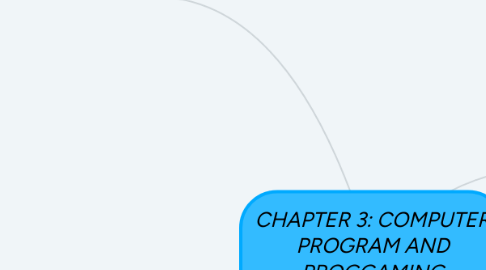CHAPTER 3: COMPUTER PROGRAM AND PROGGAMING LANGUANGE
von jahirah harizal


1. PROGRAMMING LANGUAGE
1.1. System of sign used to communicate
1.2. causing the task to be performed
1.3. PERFORMED = include all kinds of computer operations
1.3.1. data manipulating
1.3.2. text processing
1.3.3. storage and retrieval
1.4. 3 types of programming language
1.4.1. machine language
1.4.2. low level language (assembler)
1.4.3. high level language (compiler)
2. PROGRAMMING LANGUAGE PARADIGMS
2.1. PARADIGMS : model = class of programming language that share a common characteristics and its differences
2.2. imperative paradigms
2.2.1. sequential execution of instruction
2.2.2. Example : C, Pascal, FORTRAN, ALGO 60, COBOL
2.2.3. Key Features : 1) stored memory, 2) mutable variables, 3) sequencing, selection and iteration, 4) pointers
2.3. Object-oriented paradigm
2.3.1. prorammers write reusable code
2.3.2. refer object
2.3.3. Example : smalltalk, C++, java
2.3.4. Key Features : 1) abstraction, 2) encapsulation, 3) inheritance, 4) polymorphism
2.4. Functional Paradigm
2.4.1. abstract notion of a function
2.5. Logic Paradigm
2.5.1. Based on symbolic logic
2.5.2. Example : prolog
2.5.3. Based on facts and rules
3. COMPUTER PROGRAM
3.1. set of instructions
3.2. computer needs to follow
3.3. process data to informations
4. ELEMENTS
4.1. input
4.2. process
4.2.1. storage
4.2.2. output
